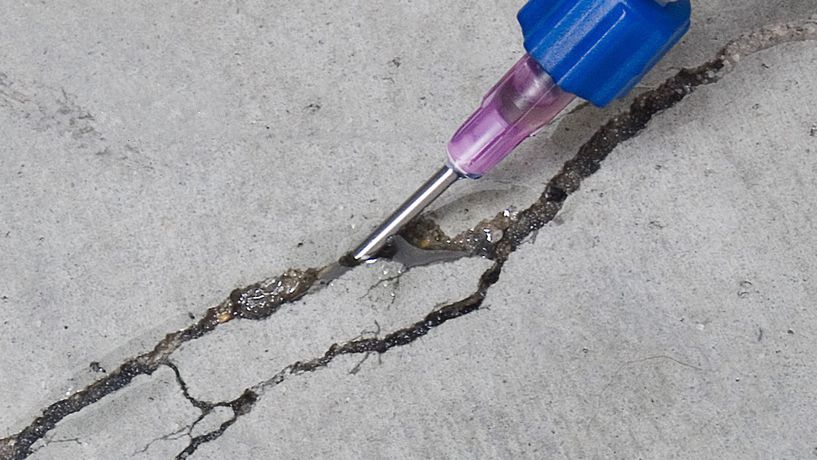This article will discuss different types of concrete cracks. After finishing the article, you will know how to repair concrete cracks.
Some Common Reasons for Concrete Cracks
1. Uneven evaporation of moistures: The uneven evaporation of moisture from concrete causes various types of cracks. If the water evaporated from the surface of the freshly placed concrete faster than it is replaced by the bleed water, then plastic shrinkage cracks appear. The excess moisture left out after hydration is eventually evaporated and causes the concrete to shrink, but the shrinkage is resisted by subgrade, reinforcements, and the other parts of the concrete, causing drying cracks.
2. Thermal Cracks: The inner temperature of the concrete increases due to the heat of hydration in the concrete. This temperature difference between the core and the surface causes thermal cracks.
3. Corrosion: The volume of the rust is always greater than the volume of steel. So, if the reinforced steel becomes corroded, then it exerts force that causes concrete cracks.

Steps for Repairing Concrete Cracks
4. Clean It: Remove all the loose dirt by using a chisel and light hammer or maybe by using only a chisel. Use a broom or small brush to clean the surfaces neatly. The idea is to make the crack surfaces hard and clean enough so that chemicals can be applied directly to the crack surfaces.
5. Wash it: Clean the cracks with water and use washing powder. You can use a hose to spray the water. Remember that the cleaner the surface, the greater will be the strength of the repaired concrete.
6. Dry it: Leave the clean crack surfaces for drying. You can use a cover during drying in case of a dirty environment.
7. For Small Cracks: Use the ready-made concrete repairing compounds. Prepare the compound as directed. Use a small chisel or a knife to prepare the crack. Pour the concrete repairing compound into the crack and use the chisel or knife to force the compound paste into the cracks. Once filled, smooth the surface and cover it up. Leave it for complete drying.
8. For Large Cracks: Use readymade fortified concrete; there are various manufacturers available. Read the application directions carefully for the product you will use. The fortified concrete will be of powder form and you have to just apply water in it. Remember, once you add water the mixture should be consumed as quickly as possible, so make a small batch, sufficient enough for a single layer, at a time.
For the extra-large cracks or for the repair work at the sides of the concrete slab, you may have to use the wooden frames as shown below:

Remove the wooden frame as soon as the concrete become stable.
The size of the concrete cracks decides the method used to repair concrete cracks. For critical concrete cracks (like cracks in foundations, etc.) it is advisable to seek professional help.


